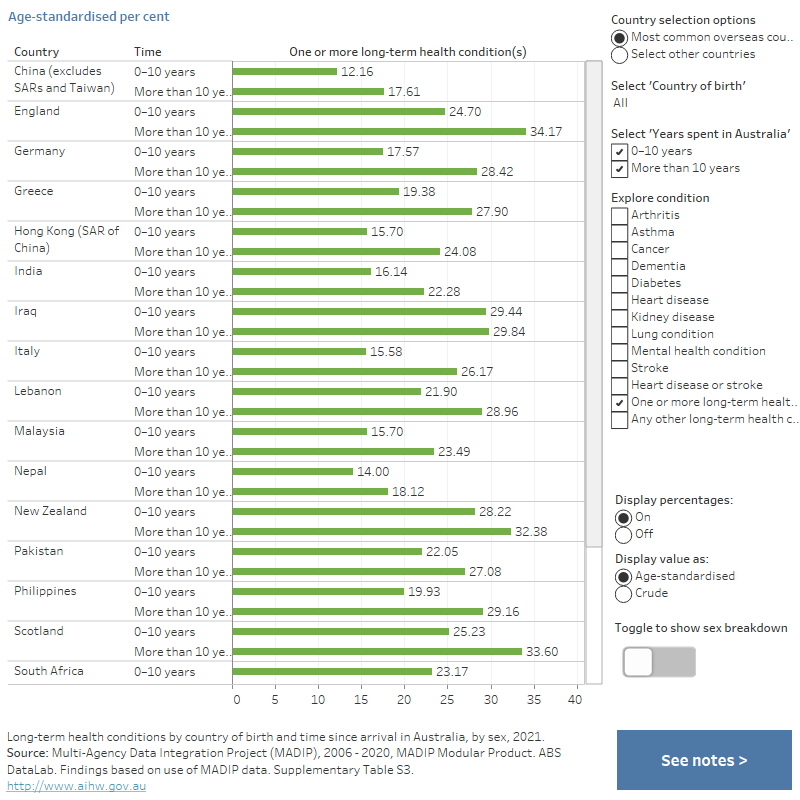Country of birth and time since arrival
Figure 3: Long-term health conditions by country of birth and time since arrival in Australia, by sex, 2021
This graph shows the crude and age-standardised percentages of people reporting long-term health conditions in the 2021 Census, by country of birth, time since arrival in Australia and sex. In general, for all the 20 most common overseas countries of birth, except Iraq, the age-standardised prevalence of one or more long term health condition(s) increased as time since arrival in Australia increased. Overall, there were variations between each condition, and at the region level of country of birth and time since arrival in Australia.

For the 20 most common overseas countries of birth, except Iraq, the prevalence of one or more long-term health condition(s) increased as the time since arriving in Australia increased, even after accounting for age differences between the populations.
This pattern was generally consistent for individual long-term health conditions with some exceptions.
For people born in Iraq, the prevalence of most conditions showed little difference between people who arrived within the last 10 years (recent arrivals) and people who arrived more than 10 years (early arrivals) before the 2021 Census. Exceptions were cardiovascular disease, kidney disease and dementia, where there was a higher prevalence for recent arrivals compared with early arrivals:
- heart disease: 4.9% and 3.5%
- kidney disease: 1.7% and 1.1%
- dementia: 1.0% and 0.7%.
People born in New Zealand and Pakistan also had a higher prevalence for dementia for recent (0.6%) compared with early (0.4%) arrivals.


